
PREV ARTICLE
NEXT ARTICLE
FULL ISSUE
PREV FULL ISSUE
NOTES FROM E-SYLUM READERS: MAY 14, 2017PAN Coin show Enthusiasm
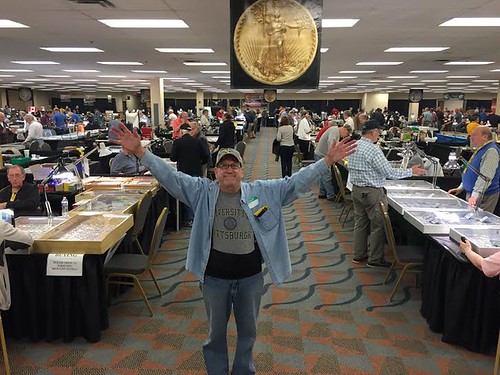 Pat McBride contributed this photo of longtime Pennsylvania Association of Numismatists member Chick Ambrass at this weekend's PAN Show near Pittsburgh. One of the Facebook comments: "We haven't seen this much coin show enthusiasm in Nebraska for 20 years." On Discerning Meaning From Numismatic Information
Are we on the cusp of another sea change in the hobby? It's not just pricing data being made freely available. The internet has brought a large amount of non-price information out in the open, in the form of personal and club web sites, and the digitization of out-of-print numismatic books and periodicals by Google and others. With the advent of the Newman Numismatic Portal, over a million pages of numismatic literature provided by its sponsor and partners are available in a single searchable index. This ready availability of information could help draw and retain the interest of new collectors and researchers, particularly among the younger generation. Jeff Starck of Coin World writes: While there is an abundance in volume of numismatic information now becoming available, mainly thanks to specialized authors and the Newman Numismatic Portal, there will still be value in the ability to navigate it, understand it, and discern meaningful information from it. Because of the increasing information, the market will change, but then it has always been changing, and dealers and collectors have always had to adapt. Kudos to the scholars for doing the research, and for the Portal and NNEPS for sharing the information. The next few decades of numismatics will surely be richer for it. Agreed. Critical thinking is more important than ever in organizing and evaluating the volume of information we have, and vital for making the new discoveries that will extend our
knowledge even further. -Editor
To read the earlier E-Sylum article, see:
"We Forgive You" Bicentennial Medal
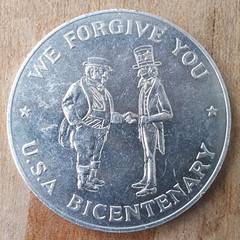 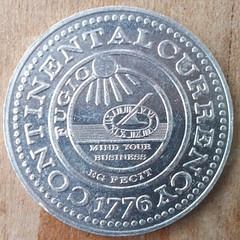 David Pickup writes: Here's a medallion I bought yesterday for £3.00. Who is forgiving whom? Did it take 200 years to forgive each other?! Thank you. I don't recall seeing this one before. Is anyone familiar with it? The perspective might depend on where the piece was made. Or maybe it was intended to be ambiguous.
Our two countries have been strong allies for generations. Close cultural and industrial ties long ago overcame memories of war. -Editor
David adds: At our meeting this week I showed it and someone said it was produced by Richard Lobel, a London coin dealer. Medallic History of Religious Conflicts in Britain
For more on Guy Fawkes and the Gunpowder Plot put into the historical perspective of the conflicts between Protestants and Catholics in 16th and 17th century England, see the article How a German Became King of England: Part I: A Medallic History of Religious Conflicts in Britain, as published by the Medal Collectors of America in the MCA Advisory. Thanks. The multipage article illustrates this history step-by-step with a series of great medals. I've included a couple nice examples here, but be sure to read to complete
article online. And if you're not already a member, sign up to support MCA and get a steady stream of great information on medals as it is published. -Editor
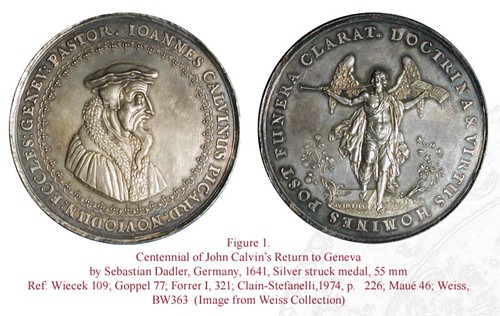 He was born in Hanover, Germany, and could hardly speak a word of English. So how in the world could George Louis, Elector of Hanover, become king of England? To answer this question we must review briefly the role religion played in selecting the British monarchs, in particular how the competition between Catholics and Protestants shaped the history of Great Britain. 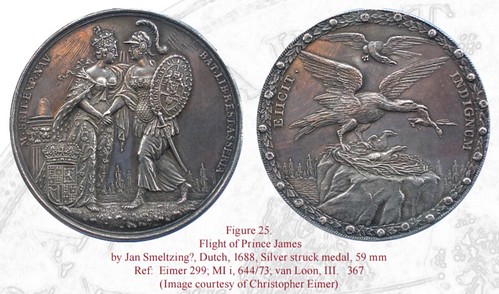 To read the complete article, see:
For more information on the Medal Collectors of America, see:
On Numismatic Spelling and Punctuation
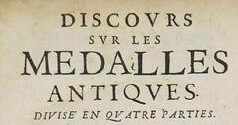 Regarding the 1627 book on medals mentioned last week, Ron Haller-Williams writes: It might seem as though the cataloguer was in a hurry! Either that, or in need of new spectacles! The word "MÉDAILLES" might perhaps now be considered as spelled correctly, because: (a) There is a convention that accents are not required on upper-case (capital) letters; on the other hand, we have accented capitals in DIVISE' and TRAICTE' - though this might be to avoid ambiguity?
Or have they been inked in? They are indeed missing from these specimens
Note: "Troisième" was spelt "Troisiesme", and "Quatrième" as "Quatriesme", likewise "plutôt" as "plustost" (p.316) - all with the "long s", of courfe! And one really has to think about e.g. "Que le denier d'argent a esté d'ordinaire de sept & de huict en l'once". There are also about 30 occurrences of "medalle" or "Medalle" inside the book – no excuse for omitting the accent on these! And, of course, this is before the Académie française was established (1635), the letters patent registered on 10 July 1637 "to labour with all the care and diligence possible, to give exact rules to our language", and its starting to publish a dictionary in 1687. Interestingly, a dictionary of 1673 gives both Medaille AND Medalle as an alternative to it! (but NOT Médaille) -
Mind you, I believe Chaucer used three different spellings for the word "penny"! 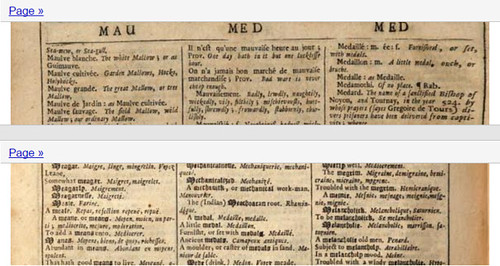 Thanks. This could be an interesting little study all in itself. -Editor
To read the earlier E-Sylum article, see:
On the Waterloo Medal Dies
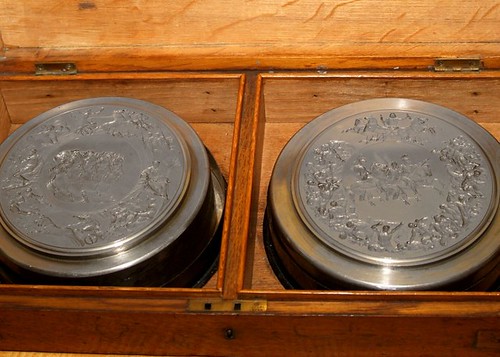 Dick Johnson writes: Pistrucci’s Waterloo Medal dies could never have struck the medal. The Royal Mint’s decision not to attempt to strike even one medal was absolutely correct. The dies would have broken with the first blow. Was this Pistrucci’s little joke on the Mint knowing it could never strike a medal that size? After all, he was a savvy medallist with the knowledge of what die’s requirements were necessary. The diestock was not the required diameter. The die lacked mass. It needed more mass to withstand the pressure of even one blow. Also it would require several blows, the number depending upon the type of metal of the blank and its hardness, making it even more vulnerable. The Mint’s decision to make electrotypes was also correct. It could have made electrotypes in any typical medallic composition, gold, silver, or copper. The technology for electrotyping in England was not available until after 1840. A German physicist, John Wright, developed the electrolysis process in 1837. The British Elkingtons (cousins George and Henry) patented electroplating in 1840 using that process. So the Royal Mint thwarted Pistrucci’s little joke in the end by making the medal after all. Thanks. The saga of the Waterloo medal is the stuff of legend in numismatic circles. -Editor
To read the earlier E-Sylum article, see:
Louisiana Purchase Sesquicentennial Medals
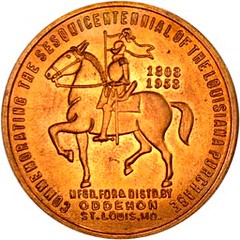 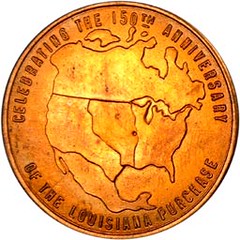 Regarding the failed attempt to authorize an official commemorative half dollar for the 150th anniversary of the Louisiana Purchase, Jeff Starck of Coin World writes: Though there was no coin for the 150th anniversary of the Louisiana Purchase, St. Louis dealer Otto Odenhon issued his own medal, which is cataloged as a So-Called Dollar (Hibler & Kappen-509). Coin World columnist David T. Alexander wrote about this not that long ago. Thanks. Jeff provided the following references. -Editor
To read the Coin World article, see:
For more information on the issue, see:
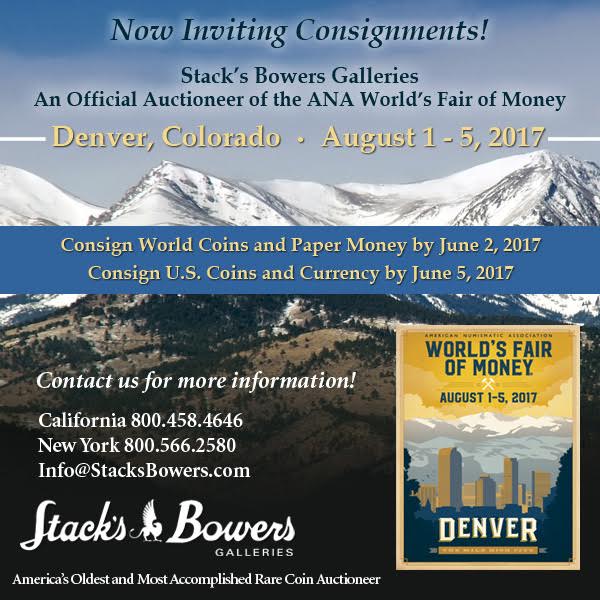 Wayne Homren, Editor The Numismatic Bibliomania Society is a non-profit organization promoting numismatic literature. See our web site at coinbooks.org. To submit items for publication in The E-Sylum, write to the Editor at this address: whomren@gmail.com To subscribe go to: https://my.binhost.com/lists/listinfo/esylum All Rights Reserved. NBS Home Page Contact the NBS webmaster 
|